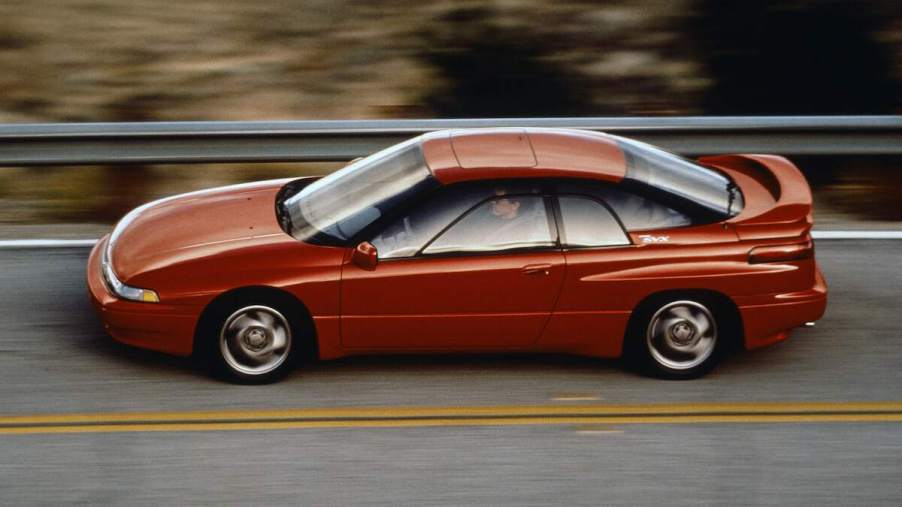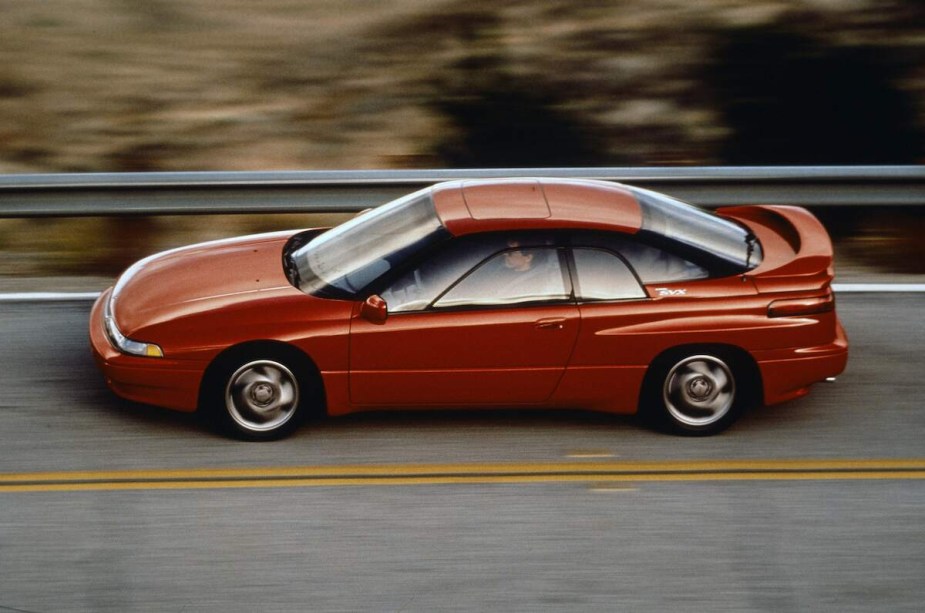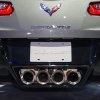
Does the Subaru SVX Have a Manual Transmission?
The SVX was Subaru’s ambitious project to go upmarket. To shed its image as a maker of unconventional all-wheel-drive wagons and hatchbacks, the company built a luxury grand tourer. It combined Subaru’s signature features — notably, AWD and a boxer-style engine — with styling from one of the pre-eminent 20th-century Italian masters. It also included leather trim and other premium features to take on luxury coupes like the Lexus SC, Acura Legend, and BMW 3 Series.
One common question about the now-defunct car is, “Does the Subaru SVX have a manual transmission?” The answer is no. Every SVX rolled off the production line with an automatic gearbox. But this quirky coupe offered plenty of intriguing features.
A brief history of the Subaru SVX

The SVX looked like a game changer from Subaru. It flaunted styling by famed Italian designer Giorgetto Giugiaro, who worked at Bertone and founded ItalDesign. The glass roof resembled an F-16 Viper’s canopy, and the interior appeared inspired by a private jet’s flight deck. It also packed a 3.3-liter flat-six-cylinder engine harnessing 230 hp. Unveiled at the 1989 Tokyo Auto Show, the SVX caused a sensation. People couldn’t believe it was a Subie.
Subaru hoped to sell 20,000 units annually but achieved only about half that number during the car’s five-year production run. Roughly 14,000 SVXs were sold from 1992 to 1997, including some front-wheel-drive models that cost $5,300 less than the AWD versions. The SVX’s demise can be attributed to styling, which consumers never fully embraced, and the almost-$30,000 price tag, more than double the sticker on the 1994 Subaru Loyale.
For decades, the Subaru SVX seemed nearly forgotten, but it has recently seen a resurgence. The passage of time and the popularity of Radwood, JDM, and ’90s cars have thrust the SVX back into the public consciousness. The idea of a luxury coupe from Subaru is still hard to comprehend, but the total package works surprisingly well. Depending on your point of view, the styling has either aged well — akin to a four-passenger DeLorean or Lotus — or remains strange.
SVX specs and performance
The SVX was built around Subaru’s AWD and a new 3.3-liter flat-six-cylinder engine producing 230 hp. Performance was decent, with a 0-to-60-mph time of just over seven seconds and a top speed of 143 mph. But it’s not exactly Porsche-like, which is what you’d expect from a flat-six engine. In reality, the experience was closer to the Porsche 928 and SVX competitors like the Lexus SC and Acura Legend.
Though 230 hp doesn’t seem like much today, when turbocharged four-cylinder engines half the size of the SVX’s displacement produce more than that figure, it was impressive in its time. By the early ’90s, horsepower was rising, but the Ford Mustang GT harnessed only 225 hp, and the L98-powered Chevy Corvette made 240 hp. As for the SVX, it was the most potent vehicle the company had ever made — so powerful that Subaru didn’t have a manual transmission strong enough to pair with the engine, HotCars reports. So the automaker went with the 4EAT automatic transmission used in various Ford, Mercury, and Mazda models.
Subaru makes a modern SVX equivalent
After Subaru ended SVX producion in 1996, it shelved the idea of a coupe and stuck to its bread-and-butter AWD sedans and wagons. In 1993, the company debuted a smaller car to compete with the Toyota Corolla, Honda Civic, and Mazda Protégé. The Subaru Impreza was slightly larger than its rivals and offered AWD, quickly making it one of the brand’s most popular models. It reinforced that the company should stick to what it does best: developing quirky AWD performance cars based on its rally heritage.
In 2012, Subaru returned to the coupe market with the BRZ. Though not a true successor to the SVX, it shares many attributes, including a boxer engine, a low center of gravity, and a fun-to-drive Subie personality.



